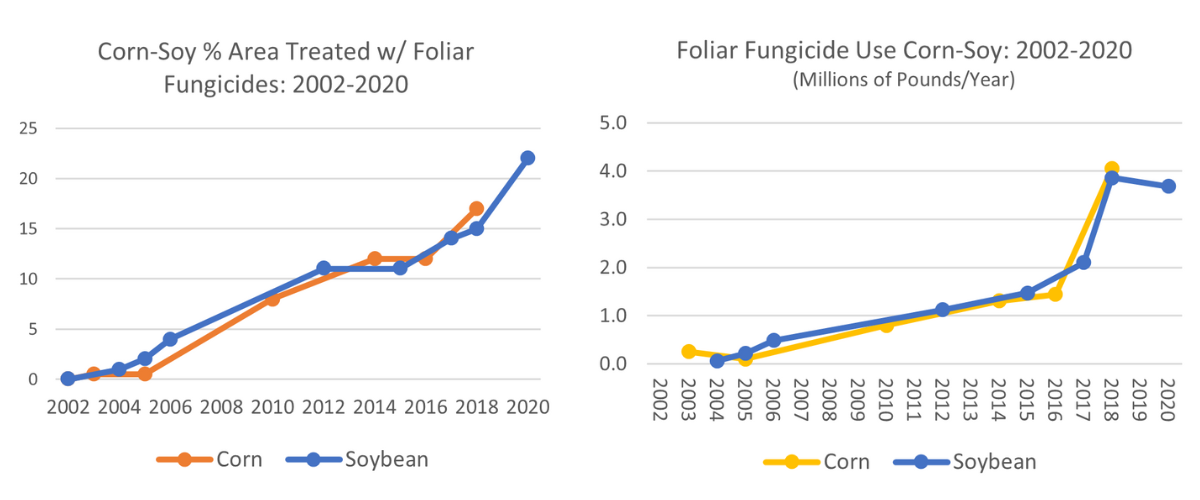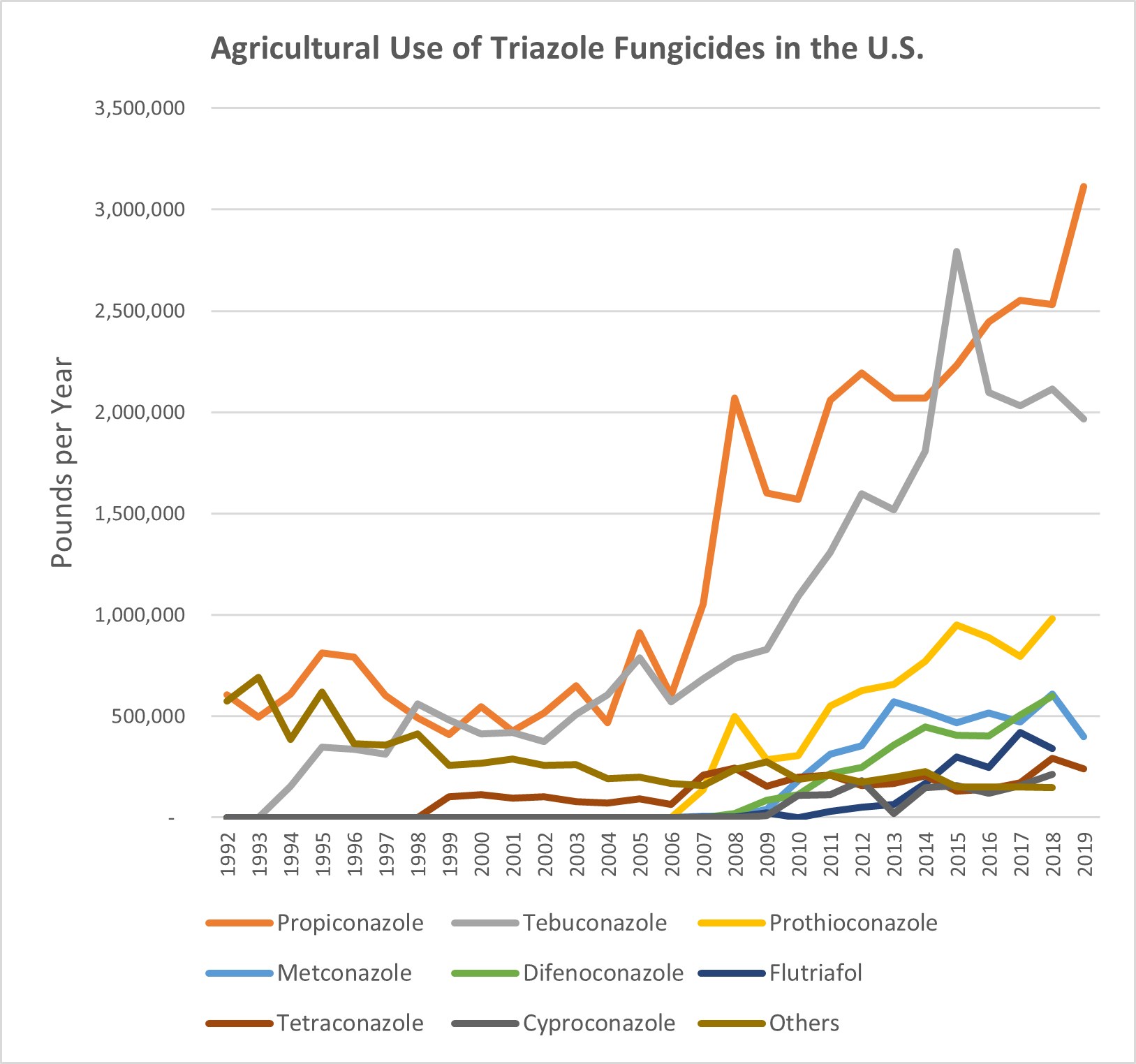Fungicides are chemicals designed to treat or prevent plant disease. They can be sprayed on crops, applied to soil, or coated onto seeds together with insecticides. Fungicides have traditionally been applied mainly to fruits and vegetables. Over the past 15 years, however, the use of these potent chemicals has exploded on large-acreage field crops like corn and soybeans (see graphs).

Source: USDA National Agricultural Statistics Service, Agricultural Chemical Use Program. Excludes fungal seed treatments.
Human Health
Triazole fungicides cause liver tumors in rodents, leading EPA to classify them as possible or probable carcinogens in humans. These fungicides also cause fatty changes in the liver, which predispose to more serious conditions like steatohepatitis and cirrhosis. Triazoles exhibit neurotoxicity, disrupt the hormonal system, and some adversely affect the thyroid gland. In the year 2000, EPA imposed a moratorium on new triazole approvals until fungicide manufacturers submitted more studies exploring these impacts. They refused. EPA nevertheless dropped the moratorium in 2006, unleashing a spate of new approvals.
Resistance to Antifungal Drugs
Overuse of fungicides in agriculture is contributing to antifungal resistance, a phenomenon whereby fungi evolve to resist the chemicals that are meant to kill them. This in turn compromises the effectiveness of medically important antifungal drugs. The biggest problem is with the group of triazole fungicides, most of which are used on crops. But a few – antifungals like voriconazole – treat fungal diseases in humans. And because some fungi that reside in the soil can also infect people, use of agricultural fungicides contributes to the growing resistance of fungal pathogens to these crucial drugs.
Antifungals are used to treat life-threatening lung diseases that afflict the immunocompromised, such as invasive aspergillosis. Because there are so few alternative treatments, aspergillosis patients infected with a resistant strain have a mortality rate of 50% to 100%. Resistance is most prevalent in Europe and Asia, but growing rapidly in the U.S. as well.
Environment
Fungicides of the triazole class are extremely persistent in the environment, with half-lives (time it takes for half a given amount to degrade) of a year or more in soil and/or water, raising the potential for accumulation in the environment over years. EPA scientists found that low levels of triazole fungicides reduce sex hormone production and fecundity (egg-laying) in various fish. They are also fat-soluble and some may bioaccumulate in fish. Fungicides are frequently detected in pollen, nectar, honeybee colonies and in bees themselves. Bees are harmed by even low-level exposure to propiconazole and tetraconazole. Triazole fungicides also inhibit bees' detoxification systems, and thereby increase the toxicity of various insecticides to bees that are co-exposed to both.
What Needs to Happen
Triazole fungicide use on farms increased by over 450% from just 2006 to 2018 (see graph), much of it either unnecessary, or in response to plant disease fostered by poor agricultural practices, like growing the same crop (e.g. corn) every year. Pesticide companies have succeeded in selling ever more corn/soybean farmers on unnecessary fungicide use by over-hyping threats of plant disease, and marketing their fungicides as promoting "plant health," even in the absence of disease.
EPA and USDA must get serious about reigning in this excessive use of fungicides through incentives to farm sustainably, stricter regulation, and action against dishonest marketing of fungicides. Such efforts would ultimately help farmers as well, by mitigating the further emergence of fungicide resistance in pathogens that cause serious fungal diseases in crops, like Fusarium wilt.

Source: U.S. Geological Survey Pesticide National Synthesis Project, Epest-High.
CFS in Action
CFS filed detailed scientific critiques of EPA's faulty assessments of four triazole fungicides – difenoconazole, tetraconazole, propiconazole and tebuconazole. In 2022, CFS sued EPA over its interim renewal of difenonconazole: for failing to obtain critical studies on human health risks, and for not assessing the fungicide's effects on endangered species. In response, EPA withdrew its interim decision in July 2023. In September 2023, EPA finally began a process to assess and hopefully reduce antifungal drug resistance caused by farm fungicide use, but only after being challenged by CFS (pp. 9-10).


